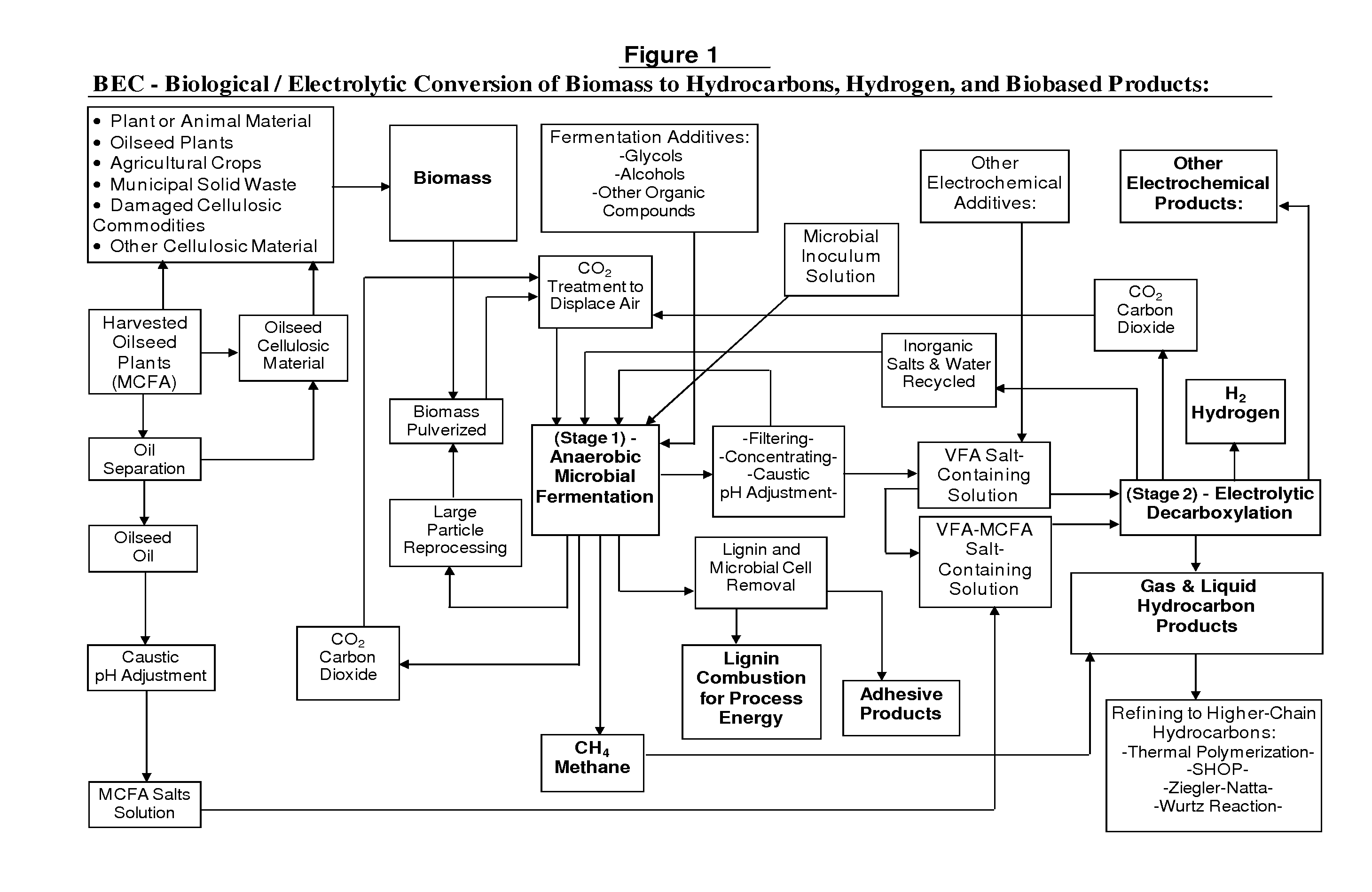Biological/Electrolytic Conversion of Biomass to Hydrocarbons
a bio-electrolysis and biomass technology, applied in the direction of electrolysis organic production, waste based fuel, microorganisms, etc., can solve the problems of uneconomical viable cellulosic ethanol technology, uncommercialized cellulosic ethanol development, and high cost of pretreatmen
- Summary
- Abstract
- Description
- Claims
- Application Information
AI Technical Summary
Benefits of technology
Problems solved by technology
Method used
Image
Examples
example 1
[0070]A mixed microbial consortium obtained from bovine ruminal fluid was fermented in vitro with eastern gamagrass (a harvested native grass) or alfalfa (harvested legume crop). Both are representative of a perennial cellulosic biomass feedstock. Separation of the resulting fermentation broth containing VFAs, from the solid residue (including cells and lignin) was accomplished by filtration and / or centrifugation.
[0071]The electrolytic apparatus was generally comprised of a simple undivided cell with carbon or graphite plates or rods used for both anode and cathode electrodes. Platinum anodes were also used for comparison purposes. Stainless steel and other metal electrode material were also used for cathodes. Although many anode materials can be used, carbon / graphite electrodes were selected in addition to platinum anodes, for example, due to their low cost and effectiveness on an industrial scale. The electrodes were immersed directly into the fermentation broth which generally ha...
PUM
 Login to View More
Login to View More Abstract
Description
Claims
Application Information
 Login to View More
Login to View More - R&D
- Intellectual Property
- Life Sciences
- Materials
- Tech Scout
- Unparalleled Data Quality
- Higher Quality Content
- 60% Fewer Hallucinations
Browse by: Latest US Patents, China's latest patents, Technical Efficacy Thesaurus, Application Domain, Technology Topic, Popular Technical Reports.
© 2025 PatSnap. All rights reserved.Legal|Privacy policy|Modern Slavery Act Transparency Statement|Sitemap|About US| Contact US: help@patsnap.com

